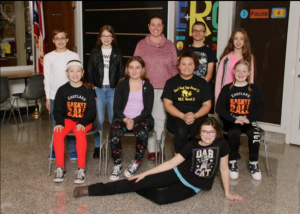From Garbage to Green

To view the photo-rich magazine version, click here.
Originally appears in the Summer 2019 issue.
HOW CAN ONE TEACHER get a whole school to start recycling? How can he or she get middle school students — preteens and teenagers — to think about their garbage and where it goes?
As I watched student after student throw plastic bottles and cans in the trash day after day (despite my daily pleas), I was determined to do something, and I knew the only way to have a strong impact was to enlist the help of student leaders to help me. This is how the Eastlake Middle School Green Team was born.
I needed a group of kids to talk to other kids about the importance of recycling. I wanted to share my passion for all things “green” with the future generation, and I wanted them to share their new passion with their peers.
Before I dug in my heels and started preaching about the importance of recycling, I did my homework and learned some startling statistics about the relationships between schools and waste production. The United States makes up only 5% of the world’s population, yet creates more than 17% of the world’s trash.1 What’s even more astonishing is that, combined, school districts contribute 20–35% of total waste produced in the US.2 In 2008, almost 35% of the ¼-of-a-billion tons of municipal solid waste was recyclable materials. Recycling reduces greenhouse emissions, lowers pollution, conserves energy and prevents greenhouse gases from being released into the atmosphere. According to James, school environments can be a center for influencing change and instilling a culture of sustainable living.3
This content is restricted to subscribers only.
If you are not yet a subscriber, please consider taking out a subscription here.
If you are an existing subscriber, kindly log in or contact us at info@greenteacher.com for more information.





